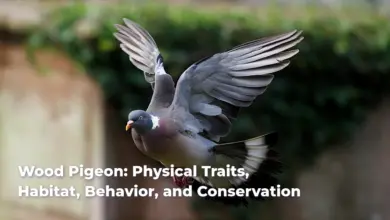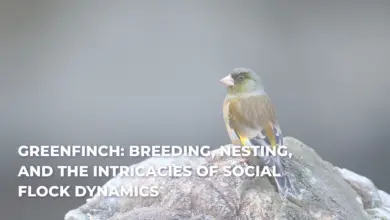Red Robin Bird: Comprehensive Insights into Its Characteristics, Habitat, and Conservation
The Red Robin Bird, commonly referenced as the American Robin (Turdus migratorius), is one of the most familiar and beloved birds in North America. With its striking reddish-orange breast, the robin has usurped its place not only as a favorite of birdwatchers but also as a symbol of the changing seasons, often heralding the arrival of spring. This bird has an intriguing mix of physical characteristics, behavioral nuances, and cultural significance, making it truly special.
From its melodious songs that punctuate the dawn to its foraging antics in gardens and parks, the red robin embodies a spirit of resilience, adaptability, and vitality that resonates with nature lovers and casual observers alike. As we delve into this article, we will explore the various facets that define the red robin, offering an in-depth look into its physical traits, habitat, dietary preferences, reproductive habits, and more. Whether you’re a seasoned ornithologist or a curious enthusiast, the rich narrative surrounding the red robin may surprise you with its depth and significance.
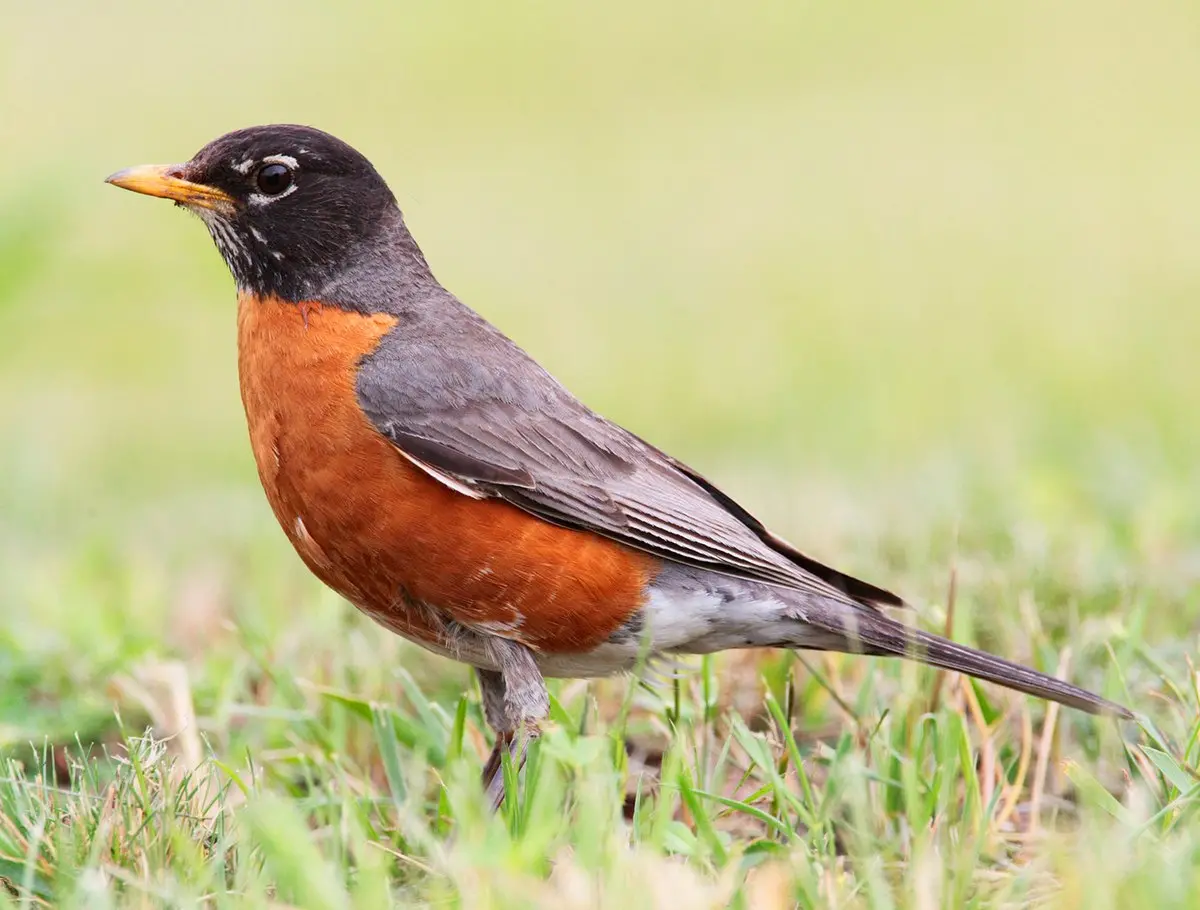
Physical Characteristics
The Red Robin Bird is a bird that commands attention with its vivid appearance and notable dimensions. Characterized by its robust physique, it measures approximately 20 to 28 centimeters in length, effectively securing its place as the largest thrush in North America. A striking feature of this bird is its reddish-orange breast, which stands out against its brown upperparts, establishing a contrast that is both beautiful and eye-catching.
Size and Weight
| Feature | Measurement |
|---|---|
| Length | 20 – 28 cm |
| Wingspan | 31 – 40 cm |
| Weight | 77 – 85 grams |
Despite the robin’s size, its weight typically ranges from 77 to 85 grams, placing it firmly in the lightweight category, allowing for agile flight. The stout, rounded belly further accentuates its robust structure, hinting at strength and vitality.
Another notable physical trait is its head, which features a darker plumage compared to the body. The male robin exhibits a striking black head, adorned with streaks on the throat, while females have a paler, more muted appearance. This differentiation in plumage allows birdwatchers to identify gender with relative ease. In flight, one can spot a conspicuous white patch on the lower abdomen and under the tail. These defining characteristics not only make the red robin a visual delight but also help in recognizing them across urban and rural landscapes.
Plumage and Coloration
The plumage of the Red Robin Bird not only defines its aesthetics but serves functional roles as well. The bird’s vibrant reddish-orange breast acts as a vivid signal, especially during the breeding season when territorial disputes are common. Males tend to exhibit a more intense coloration than their female counterparts, particularly as they mature. This variation plays a crucial role in mate selection and the establishment of dominance.
The combination of colors can vary with age; older males develop deeper contrasts between their breast and surrounding features, enhancing their visibility during mating rituals. This differentiation can even be assessed statistically, where researchers might utilize chi-squared tests to analyze the intensity and distribution of coloration across populations.
| Sex | Notable Color Features |
|---|---|
| Male | Darker head, vibrant breast |
| Female | Paler coloration, less contrast |
Differentiation in sexual dimorphism is not merely superficial it carries profound implications for their social interactions. The males’ vivid display plays a central role in attracting potential mates while deterring rivals, thus shaping breeding dynamics.
Sexual Dimorphism
Diving deeper into sexual dimorphism among robins reveals how physical traits relate to their reproductive strategies and success. Male Red Robin Birds sport a strikingly brighter red breast compared to females, which serves practical roles during the mating season. This pronounced coloration helps males stand out in the environment, making them more noticeable to females.
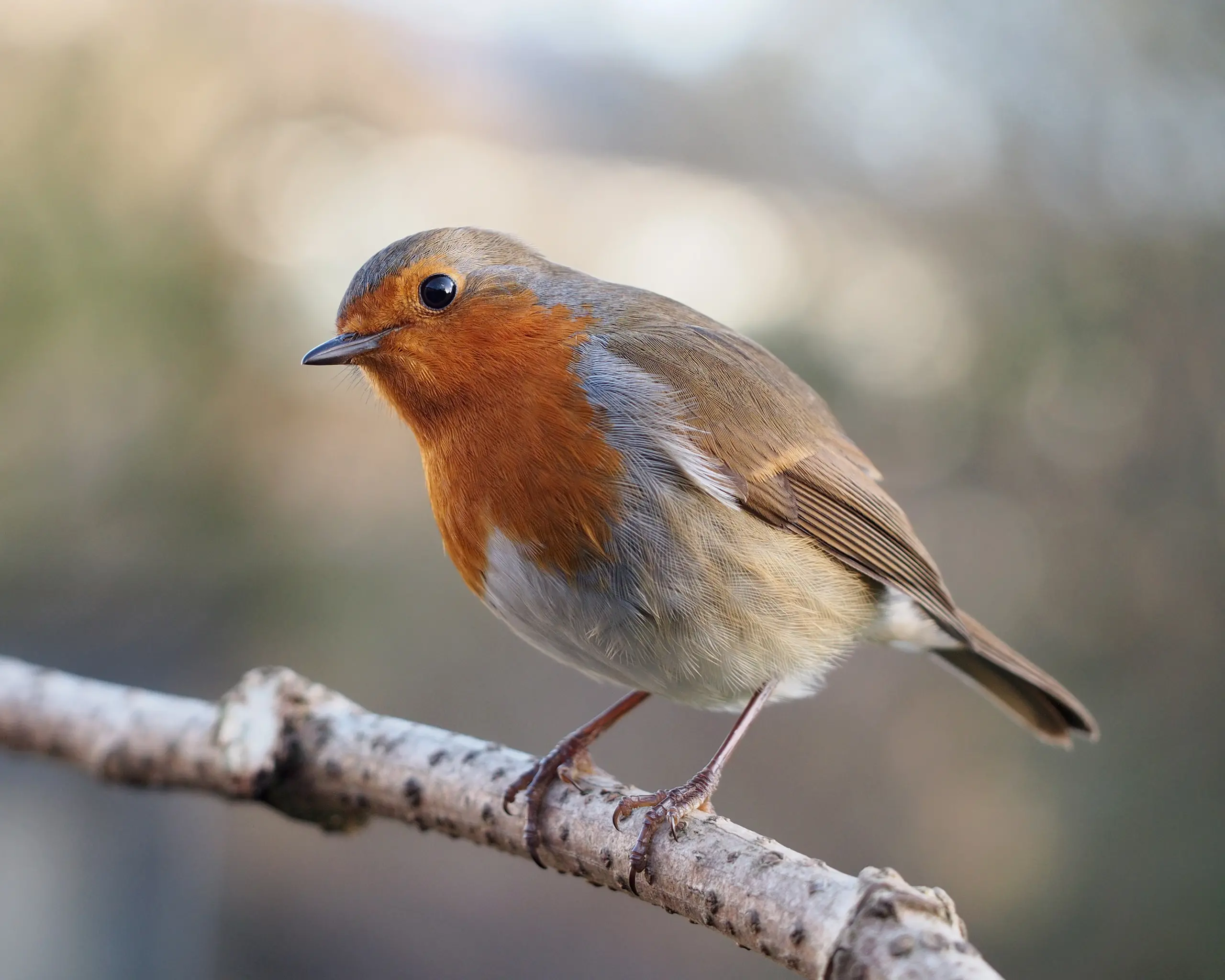
However, as males age, the changes in their plumage become more pronounced with not just a brighter breast but also the development of a broader grey fringe around their chest. The dimorphism shifts dynamically; while younger males may display a less vivid coloration, older males showcase a more noticeable contrast. In contrast, females maintain a more consistent appearance throughout their lives, which can sometimes make them less conspicuous in the environment, possibly a survival strategy from predators.
This sexual dimorphism holds essential implications for their mating system, as males with more vibrant coloration are often favored by females, leading to better reproductive success. Understanding this aspect showcases nature’s complex tapestry where physical traits decisively dictate interactions and relationships.
Habitat and Distribution
The Red Robin Bird is widely distributed across diverse habitats, exhibiting an impressive adaptability that allows it to thrive in both natural and human-altered environments. This bird can be found inhabiting regions ranging from urban parks and gardens to rural fields and forests.
Natural Habitats
- Woodlands and Forests: Robins take shelter near rivers, streams, and tree-covered areas as their optimal nesting zones.
- Urban and Suburban Areas: Their adaptability shines in city parks and lawns, showcasing their ability to coexist with humans.
- Grasslands and Fields: Amidst open landscapes, robins find ample foraging opportunities where they actively hunt for food.
Initialized with a capacity to thrive in varied environments, American Robins are particularly proficient in urban settings, where they can forage for food in human-made landscapes. Their flexibility in habitat selection ultimately enables them to establish a presence across different regions of North America.
Geographic Range
The Red Robin Bird’s geographic range extends from Alaska in the north to Mexico in the south, encompassing every state in the contiguous U.S. The bird is equally present in Canada, showcasing its versatility. As summer approaches, robins migrate northward to breed, and many return to their nesting sites each year, establishing seasonal patterns.
| Region | Geographic Range |
|---|---|
| Northern Limits | Alaska, Canada |
| Southern Limits | Mexico |
| Key Habitats | Woodlands, urban parks, grasslands |
The seasonal movements of robins highlight a behavioral adaptation to environmental changes. Their migratory habits are predominantly influenced by food availability, with robins often returning to the same breeding sites year after year, reinforcing their connection to their chosen landscapes.
Migratory Patterns
Robins engage in distinctive migratory behaviors that characterize their year-round activities. In the fall, as the air turns crisp, Red Robin Birds migrate southward, leaving their northern breeding grounds as food resources wane. This seasonal transition typically leads them to the southern United States and parts of Mexico, where they can find ample food sources during winter.
Spring heralds the return of robins to their northern nesting territories, often coinciding with the blossoming of seasonal flora, marking their return with joyful melodies that resonate through gardens and fields across the landscape.
By exemplifying adaptability, the American Robin illustrates not just its capability to survive but to thrive amidst changing habitats and seasonal cycles. Such resilience encapsulates the essence of nature’s intricate relationships and poses an ongoing fascination for bird enthusiasts.
Diet and Foraging Behavior
The Red Robin Bird is known for its omnivorous diet, primarily feeding on insects and fruits based on seasonal availability. This dietary flexibility has enabled robins to thrive in diverse habitats across North America.
Primary Food Sources
American Robins’ diet can be broken down into two main categories:
- Insects:
- Earthworms
- Beetles
- Caterpillars
- Grasshoppers
- Fruits:
- Blueberries
- Raspberries
- Apples
- Holly berries
Robins are particularly adept at foraging for earthworms, often utilizing their keen eyesight and auditory skills to detect prey hiding beneath the soil. During spring and summer, their diet is heavily skewed towards protein-rich insects that support reproductive processes and nurturing young chicks. As winter approaches and insects become scarce, robins shift their focus to berries and other fruit sources, showcasing their remarkable adaptability.
Foraging Techniques
Red Robin Birds employ a range of foraging techniques that reveal their intelligence and adaptability:
- Ground Foraging: Robins typically exhibit a “run-and-stop” method while foraging for earthworms and other invertebrates, punctuated by their characteristic head-cocking stance.
- Visual and Auditory Detection: Utilizing both sight and sound, they can detect prey moving beneath the ground, thereby enhancing their foraging success.
- Fruit Picking: Robins demonstrate proficient fruit-picking skills, often perching on branches or hanging upside down to reach berries.
- Leaf Turning: They can also utilize their beaks to uncover hidden insects beneath leaves.
- Probing: Using their bills to probe the soil or leaf litter can yield fruitful results, particularly after rainfall when earthworms are more accessible.
These foraging behaviors not only reflect the robins’ behavioral ecology but also their ability to adapt in achieving nutritional success across various seasons.
Seasonal Diet Variations
The diet of the American Robin is seasonal, allowing them to optimize their energy intake based on food availability throughout the year.
- Spring and Summer: During these months, robins’ diet consists mainly of insects and earthworms, which make up to 40% of their daily intake, satisfying their nutritional requirements, especially for breeding.
- Fall and Winter: As insect populations dwindle, robins rely on fruits and berries for sustenance, which make up to 60% of their diet during colder months. This transition demonstrates their adaptability to seasonal shifts and ecological changes.
Through seasonal variations in their diet, American Robins epitomize ecological resilience, taking full advantage of the resources provided by their habitats. Their ability to alter their dietary habits in response to fluctuating food availability ensures their survival across diverse environments.
Nesting and Reproduction
When it comes to nesting and reproductive behaviors, the American Robin showcases a unique blend of strategic planning and parental care. From nest construction to egg-laying, every aspect reflects their innate capacity for adaptation and resilience.
Nest Construction
Red Robin Birds typically nest from early spring to mid-summer, often producing multiple broods in a single season an essential strategy to offset the high mortality rates of chick survival. The female takes charge of constructing the nest, choosing sites in trees, bushes, or even advantageous human-made structures.
Nests are typically cup-shaped, measuring approximately 15 to 20 centimeters in width, carefully crafted from various materials such as twigs, grass, and mud. The materials are layered to form a sturdy base and are often reinforced with dry grasses for comfort and warmth.
Breeding Seasons
The breeding season for Red Robin Birds spans from April to July, and during this time, the male displays territorial behavior to secure proximity to potential mates. Once nests are completed and eggs laid, both parents share responsibility for providing care to their young ones.
Clutch Size and Egg Description
A typical clutch consists of three to five eggs, uniquely characterized by their sky-blue color, often referred to as “robin’s egg blue.” These eggs usually measure about 2.8 to 3 centimeters in length, with smooth and glossy surfaces.
The incubation period lasts about 12 to 14 days, where the female remains vigilant over the eggs to maintain optimal conditions for embryo development. Post-hatching, both parents actively participate in feeding and protection, showcasing a cooperative approach to raising their young.
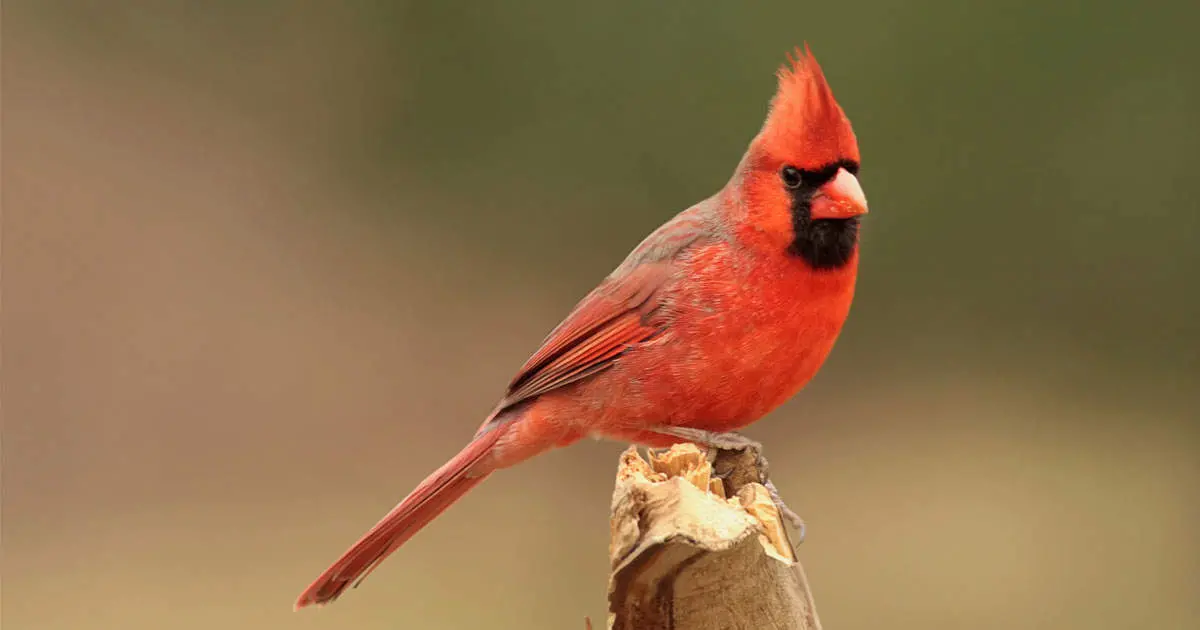
In essence, the American Robin’s nesting and reproductive strategies highlight their adaptability to environmental conditions, reflecting critical adaptive trends that contribute to their evolutionary success.
Behavioral Characteristics
The behavioral patterns displayed by American Robins illustrate their adaptability, sociability, and territoriality, especially during the critical breeding season.
Territorial Behavior
Males are particularly known for their strong territorial instincts, which they assert through both vocal and physical displays. Song becomes a key tool for these birds, with males often singing to mark their territory and attract potential mates. Their melodious tunes can be heard from perches atop trees or rooftops, resonating throughout their claimed territory.
During the nesting season, robins exhibit aggressive behavior toward intruding males, with chase-flying and vocal warnings becoming common. This fervent defense strategy reflects their commitment to reproductive success, ensuring a prime nesting area free from competition.
Retail-oriented hostile behavior can be seen when larger predators threaten their nests, leading robins to band together for collective defense, demonstrating their cooperative instincts in protecting their young.
Vocalizations and Songs
Red Robin Birds are celebrated for their varied vocalizations, which encompass clear, melodious whistles and complex songs. Each male possesses a remarkable repertoire of high-pitched phrases, which increases around dawn and twilight as they perform territorial displays.
- Distinctive Calls: Their calls often manifest as “tic,” “whinny,” or “tut,” serving multiple purposes ranging from establishing territory to signaling alarm.
- Song Patterns: Their songs consist of distinctive caroling phrases, allowing male robins to communicate effectively both with rivals and potential mates.
- Social Interaction: Vocalizations also facilitate social interactions within flocks, creating a network of communication that enhances their collective foraging behaviors.
Through their songs and calls, American Robins convey a rich tapestry of social interactions reflecting their adaptability and inherent complexity as a species. Their vocal behaviors and social structures highlight the fascinating dynamics that govern their existence.
Conservation Status
When evaluating the conservation status of the American Robin, it becomes apparent that this species is categorized under “Least Concern” by the International Union for Conservation of Nature (IUCN). Despite their widespread distribution and stable population numbers, various localized challenges continue to affect certain populations.
Population Trends
- Current Status: American Robins exhibit healthy numbers overall, with populations remaining stable across most habitats.
- Local Challenges: However, in specific regions especially urban areas robins may experience localized declines, often correlated with habitat loss and environmental changes.
Threats and Challenges
- Habitat Loss: Urbanization, agriculture, and landscape changes threaten natural nesting and foraging habitats.
- Pesticides and Pollution: Pesticides pose risks not only through direct consumption of contaminated insects but also via reduced food availability.
- Climate Change: Shifting climate patterns may disrupt food availability during breeding seasons, potentially affecting reproductive success.
- Predation: Increased predation pressure due to domestic cats and competition from invasive species pose further risks to existing populations.
Conservation Efforts
- Monitoring: Ongoing population monitoring initiatives help identify trends and address potential environmental threats.
- Habitat Conservation: Strategies aimed at preserving natural habitats are essential to ensuring adequate nesting and foraging opportunities.
- Education and Outreach: Raising public awareness about the importance of creating bird-friendly environments plays a crucial role in conservation efforts.
- Legislative Protections: Robust conservation laws, including the Migratory Bird Treaty Act, serve to protect American Robins and their habitats on a broader scale.
Fun Facts about Red Robins
The Red Robin Bird captivates hearts far beyond its physical traits and vocalization. It embodies fun facts and cultural significance that enrich its status in North America.
Cultural Significance
- Symbol of Spring: Robins often herald the arrival of spring, marking the close of winter.
- Good Luck: Many consider seeing a robin a sign of good fortune; specific traditions even encourage making wishes upon encountering one.
- Role in Folktales: In various tales across cultures, robins are seen as protectors and messengers, embodying themes of renewal and hope.
Myths and Folklore
- Connections to Death: Irish folklore often associates robins with the reincarnation of spirits, lending them a deeper spiritual significance.
- Christian Symbol: The robin’s red breast is tied to various Christian narratives, often seen as a sign of sacrifice and redemption.
Fun Facts
- State Bird: The American Robin is recognized as the state bird of Connecticut, Massachusetts, and Michigan.
- Melodic Presence: Known for its melodious songs, robins are often one of the first birds to greet the sunrise in spring.
- Friendly Animals: Their approachable nature allows them to forage near human activity, endearing them to many.
Observational Tips for Birdwatchers
For birdwatchers, the Red Robin Bird presents countless opportunities for observation, learning, and connection with nature. Here are essential tips for capturing the beauty of these delightful birds:
Ideal Habitats
Seek out locations that include a mix of open green spaces and dense shrubbery, such as:
- Parks and Gardens: Robins love foraging for insects in fields and lawn areas while nesting in nearby trees.
- Wooded Areas: Look for robins in areas with ample vegetation; they enjoy foraging near water bodies.
Foraging Behavior
Observe closely as Red Robin Birds engage in distinctive behaviors. Their “run-and-stop” foraging technique is a fascinating sight, allowing you to witness their agility and perceptive skills.
Nesting Sites
Look for robin nests in wooded areas, trees, and human-made structures. Their nests are often placed within the dense foliage of trees, showcasing their strategic choice of habitat.
Respectful Observation
Always maintain a safe distance from nesting sites and avoid disrupting the birds. A pair of binoculars may enhance your viewing experience without disturbing their natural behavior.
Through engaging with the Red Robin Bird, both casual observers and seasoned birdwatchers can appreciate nature’s intricate tapestry and the ecological significance these birds embody. Their presence enriches the environment, connecting individuals to the rhythms of life across seasons.
In conclusion, the red robin serves not only as a symbol of beauty and resilience in the natural world but also as a species that exemplifies adaptability, community, and the interconnection of life. Whether through its delightful songs or captivating behaviors, the red robin provides a wealth of knowledge and joy for observers and nature lovers alike.







